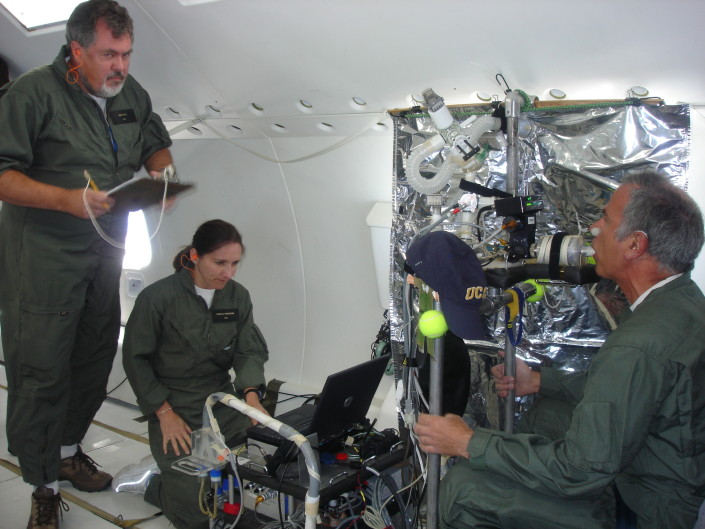Space Flight for All

Dr. Kim Prisk (left) and Dr. Chantal Darquenne (center) measure aerosol deposition in Jeff Struthers’ lungs during a lunar gravity portion of a Reduced Gravity Flight for an experiment funded by the National Space Biomedical Research Institute. Prisk’s research team is seeking to determine how moon dust acts in the human lungs and its health risks to astronauts.
Understanding, Protecting, and Treating the Body in Space
The development of commercial spaceflight will soon permit regular access to space for people who have not had specialized medical screening or years of astronaut training. NSBRI has been at the forefront of investigations that explore how typical people, some with chronic medical conditions, might handle the rigors inherent to spaceflight analogs. NSBRI has supported multiple projects developing strategic plans for screening members of the public prior to commercial spaceflight opportunities, and also those developing plans for support or treatment during and immediately after commercial spaceflights. The responses of healthy people to centrifugation as well as people with diabetes or controlled heart disease have been measured, with the conclusion that many individuals with treated chronic disease are likely safe candidates for sub-orbital or short-orbital commercial spaceflights. NSBRI’s sister organization, the Baylor College of Medicine Center for Space Medicine, supported the first manned stratospheric balloon test program, by providing contingency medical care with concomitant physiological monitoring designed to gain important new information about the body’s response to a new situation.





